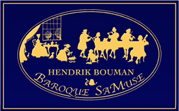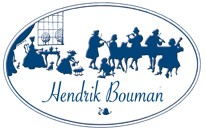by the halting flute motif which evokes the entry of an actor on stage, uttering but a single exclamation.
In the Andantino, the solo entry with its descending broken cord symbolises the apparition of a heavenly messenger, and after several recurrences, the same motif quietly closes the movement. The Finale with its snappy rhythms, is a tribute to Telemann, the Vivaldi of the North.
Following the Phillip Bate’s Memorial Recital with Simon Standage in Oxford, United Kingdom I composed for him the Violin Concerto ]2008]. The initial proud and festive Allegro suggests the opening of a royal ceremony. The Adagio evokes sleep, whereby the violin solo represents the wandering spirit, and the accompaniment playing an ostinato motif in unison, the body. The gigue-like Finale wraps up the concerto in a compelling gesture.
The Cello Concerto [2005] written in Canada, sounds a grimmer note. It alludes to the ‘Battle of Britain’ in which the German ‘Luftwaffe’ failed to annihilate the Royal Air Force’s ‘Fighter Command’ of which in August 1940 Sir Winston Churchill declared: “Never in the field of human conflict was so much owed by so many to so few.”
The lyrical Adagio represents the Divine Grace. Here the solo is only sparsely accompanied by two violins playing pizzicato in unison; both sections are repeated in ornamented fashion.
In the quick outer movements, as in Vivaldi’s early ‘Concerti a Cinque’, the cello alternates between its independent concertato and its basso continuo role. In the Finale, notably the cello and string frequently play in dialogue, completing each other’s musical gestures. After a final cadenza, the movement resumes with its opening ritornello, before slowly fading away.
The Recorder Concerto [2001], which I composed on the French Côte d’Azur, is the most concise of the 5 Concertos.
In the quick movements, the ritornello and its Da Capo [the literal repeat of the initial ritornello at the end of a movement] appear to frame one continuous solo, as in the ‘Preludes of J.S.Bach’s English Suites. The opening theme of the first movement recalls the restrained character of an instrumental ‘sinfonia’ in German church cantatas. The pastoral middle movement with its slowly swifting harmonies marries melody with texture, characteristic of music from Venice. The opening of the Finale with its syncopations, suspensions and irregular metrical groupings brings in an element of wit, and the recorder provides ample virtuoso display with its warbling arpeggios, culminating just before the end in one of its highest notes.
©Hendrik Bouman
CD recorded at Firle Place, East Sussex, United Kingdom in 2009 ℗ DASH www.firle.com












